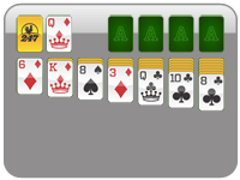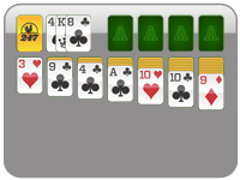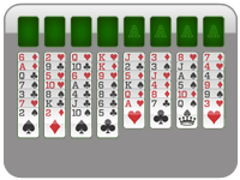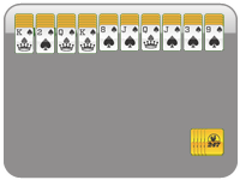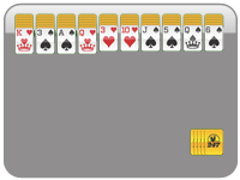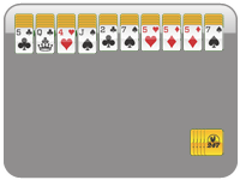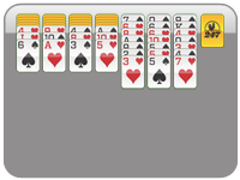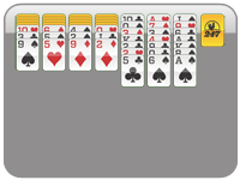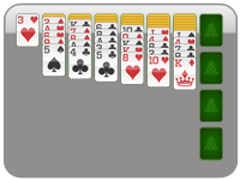How to Play Riichi Mahjong
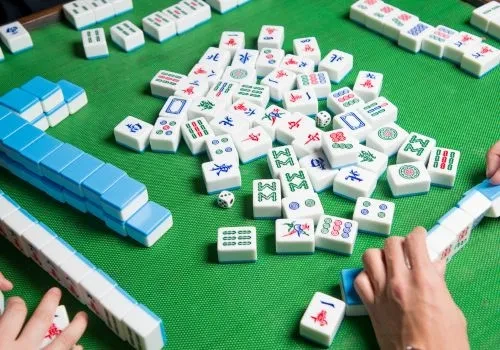
Learning to play riichi mahjong, or Japanese mahjong, can seem a little overwhelming. There are lots of rules and lots to remember. But once you understand the basics, you'll be in good shape. If you're sick of card games or just want a more interesting way to pass the time than endlessly scrolling on your phone, Riichi Mahjong just might be the answer. It adds some unique twists to traditional mahjong, particularly when it comes to the types of tiles used, the scoring system, and the number of rounds. This guide will cover the setup, rules, and scoring so beginners can start playing.
Riichi Mahjong Basics
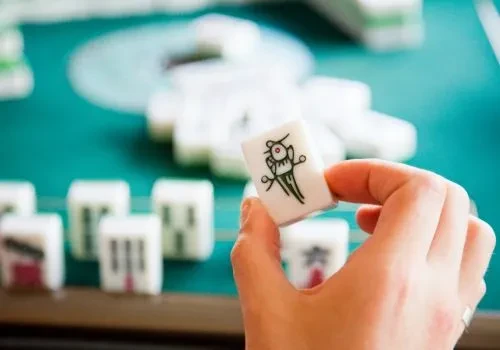
Understanding the basics of how to play Japanese mahjong is what will give you the best foundation for playing games with friends and having fun. It might feel a little overwhelming at first, but that's why we're breaking it down, piece by piece.
Understanding the Tiles and Setup
What do you need to play Riichi Mahjong? First, you'll need a proper set of Riichi tiles. Don't use the American variant or the original Chinese version. That means you'll be set up with 136 tiles total, divided into suits and honors. The suits include characters, bamboo, and dots. And the honors include winds and dragons. Chinese mahjong tiles feature flowers and seasons, but riichi does not, so looking for those is a good way to tell if you're using the right set.
Typically, you'll play with a group of four. Every player starts with 13 tiles, and the goal is to form four sets and one pair in your hand. But what does that mean? Sets are groups of three tiles that are either in a sequence (i.e., 1, 2, 3 or 6, 7, 8 or similar) or a triplet (i.e., they're all the same tile). Sequences and triplets need to be within the same suit as well. The pair is two of the same tile in the same suit or honor.
There are a lot more complications to how you can win, but this is the general outline.
How the Game Flows
Once everyone has their hand of 13 tiles, you'll begin play in a series of rounds. Every round on your turn, you'll need to draw a tile and discard a tile. Once you're one away from winning, you'll call riichi, which you should think of like calling "uno" — it's just a way to signal that you're close to winning.
Players can claim a discarded tile to create a set of three, which is called melding, so you will want to keep an eye on what other players are throwing back. But remember: you can only call a tile if it's the final one you need to complete a set.
Play continues until a player wins or all the tiles in the wall are dealt. There's also a betting system that can come into play, but it's better for beginners to set that aside for now.
Unique Rules in Riichi Mahjong
Japanese mahjong rules are a little different, and understanding these unique rules is essential to the game. Again, to keep things as simple as possible while you're learning, we'll focus on three rules in particular.
- Riichi declaration: This is when you declare or call out "riichi" as soon as you're only missing one tile to win the game. This also locks your hand (meaning you can only draw new tiles and must discard them immediately if they're not the winning tile).
- Dora tiles: These are bonus tiles that, when revealed, can increase scoring. They're played randomly throughout the game. One example is the red 5 in each suit, which would give you +1 to your hand.
- Chombo penalty: These are mistakes made in the game that are major slip-ups. More than just a quick "oops" these mistakes result in irreversible changes to the game (like revealing your hand too early). The penalty is not a flat number, but can vary depending on the mishap and the game in question.
Scoring and Strategy in Riichi Mahjong
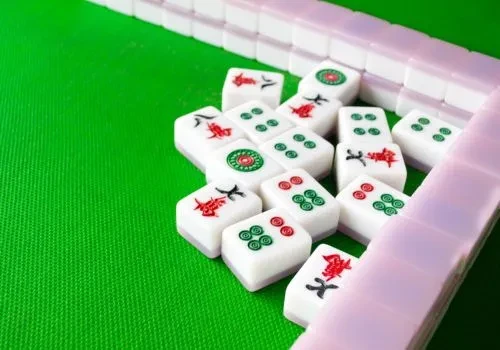
Scoring and strategy is going to be toughest part to master so don't get frustrated if things don't click the first time you read it all through. We'll try to take you step by step and make it as clear as possible so you're ready for a game.
What Are Yaku and Why They Matter
In riichi mahjong, you need to understand yaku, which are the specific combinations of tiles or conditions that give your hand value. A winning hand must contain at least one yaku to be considered valid. Some examples of yaku include:
- Tanyao: This means "all simples" and is when the hand only has numbered tiles 2–8. It's one of the fastest and easiest yaku to obtain.
- Pinfu: This is when your hand has four sequences, your pair can't be any honor tile that awards fu, you're waiting on a two-sided run, and your hand is fully concealed.
- Yakuhai: This is when you have a triplet or quad of certain honor tiles, specifically wind or dragon.
Understanding this is one of the most complicated parts of Riichi Mahjong!
How Riichi Mahjong Scoring Works
In real life, scoring works a little bit like Monopoly or poker. Every player gets a bunch of sticks that have different values, and this will be your score in the end. First, you want to count your han, which is your hand value based on yaku and dora. Then you'll need to calculate your base points, which you can do by adding any additional fu to your starting fu of 20. Then you multiply your fu by your han, and that's your score.
But because riichi mahjong is so complicated, many players will use a simple scoring table to help them calculate rather than trying to do it off the top of their heads. You can find an example of one here.
Beginner-Friendly Strategy Tips
There are a few simple strategies you can try that might help your hand as a beginner. First, aim for the easiest yaku like tanyao. Just because it's quick to get doesn't mean it's not worthwhile! You can also more or less forget about Dora in your first games. Focus on building yaku first and foremost. If you can grab a dora, great, but don't let it consume you. And finally, don't be afraid to declare riichi early. Yes, it locks in your hand, which can feel a bit intimidating, but it may also add early pressure to your opponents and improve your payout in the end.
Why Try Riichi Mahjong?
Now that you understand how to play riichi mahjong, you're ready to go pro! Okay, maybe not just yet — it's an incredibly complicated game. That just means it's all the more rewarding when you finally master it. The most important thing to remember is to worry less about the score to start and more about getting a handle on the rules, which can only come with practice. If you just want to get familiar with the tiles themselves, then check out 247 Solitaire's mahjong games. There, you'll find tons of tile and card games that you can play for free online or in the app. Plus, it tracks stats and has seasonal varieties to keep things fresh. Start playing today.
Solitaire Games
More Solitaire Games
More Games
Solitaire News
Disclaimer
DISCLAIMER: The games on this website are using PLAY (fake) money. No payouts will be awarded, there are no "winnings", as all games represented by 247 Games LLC are free to play. Play strictly for fun.

